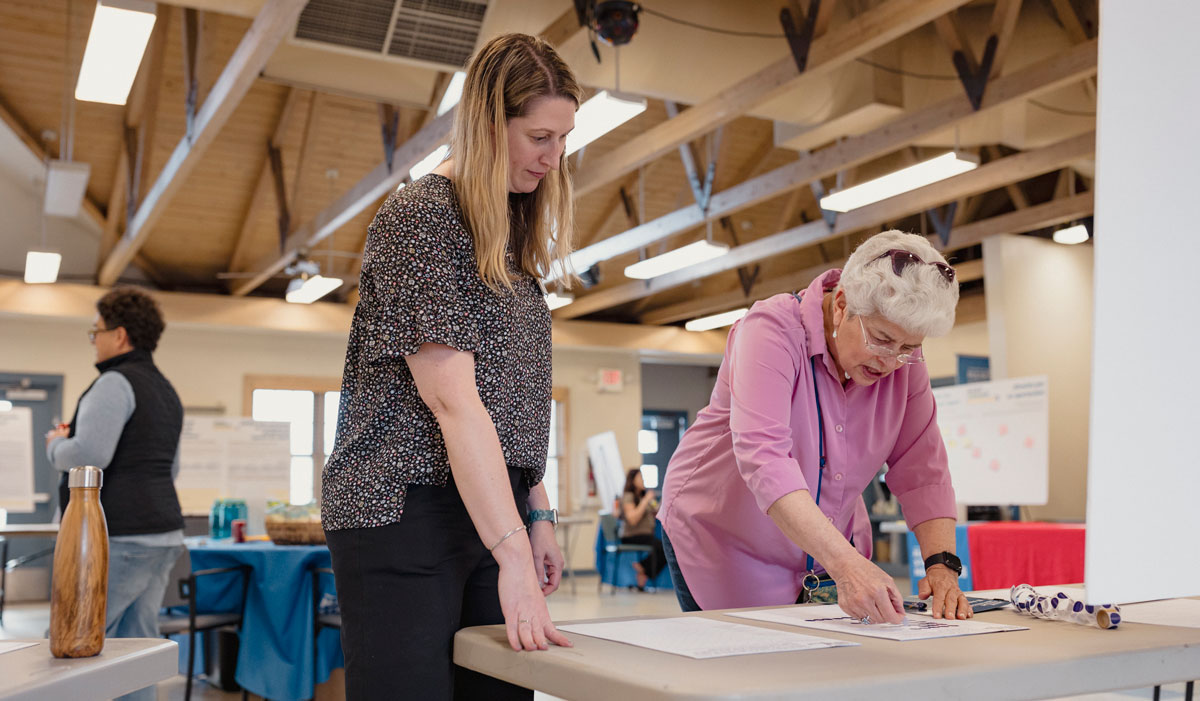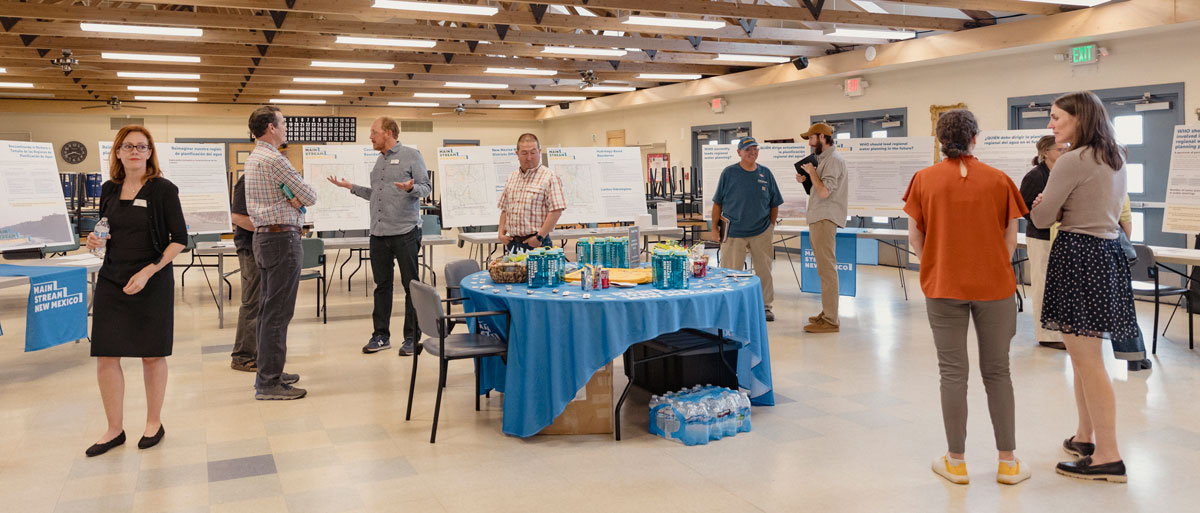New Mexico: Planning and Taking Action
Discovering Shared Water Values at Open Houses Across New Mexico
Nov / 2024

When it comes to water, there may be more that unites us than divides us.
At least, that’s what we can surmise from preliminary data gathered at 16 water-planning open houses hosted across New Mexico between April and August, 2024.
The Interstate Stream Commission organized in-person events – along with an ongoing online open house – in an effort to engage New Mexicans in planning for a future with less water. (Thanks to a prolonged drought and climate change, experts predict a 25-30 percent reduction in surface water over the next 50 years. A similar reduction is expected in groundwater reserves.)
More than 2,300 people answered the call, showing up at community centers, water district offices, and city halls, or answering questions online. At the in-person events, hosted in each of the state’s 16 water regions, New Mexicans had an opportunity to learn more about our state’s water future, communicate their concerns and put their water-planning priorities on paper.


A full report summarizing data gleaned from public input will be available in the coming months. Until then, here are a few highlights:
- Across the state, New Mexicans have similar concerns. From Albuquerque to Artesia and Roswell to Ruidoso, a majority of participants (53 percent) said they want to protect above- and below-ground water resources while ensuring enough water is available for future generations. In short, New Mexicans want balance. We value conservation, stewardship, and the right to responsibly use what we have.
- The open houses attracted more engagement than ever before. New Mexicans across the state – including many who had never been involved in water planning before (54 percent) – showed up to learn and to contribute their voices to vital discussions about the future of water in our state. Of the 2,300 participants, 710 attended in person, and more than 1,600 engaged online.
- When it comes to how our regions are drawn, most participants think nature knows best. As part of the Water Security Planning Act, the boundaries of New Mexico’s water regions are being reexamined. When asked how we might redraw the lines, a wide margin of open house participants (73 percent) said they prefer hydrology-based divisions over municipal or political boundaries. That means they want water regions that are based on the location of watersheds, rivers, and aquifers. As it stands, regional boundaries follow a combination of political, cultural, and hydrological borders.
More insights are on the horizon as our partners at Brendle Group, a Colorado-based sustainability consultancy, analyze the open house responses they collected while traveling the state and engaging online. Until then, we invite you to browse the data to learn more about how your fellow New Mexicans see the future of water in our arid state. Click through the tabs near the top of the page to toggle between state, regional, and online-only data.

So, where do we go from here?
Public input is the heart of New Mexico’s water-planning process, and the Interstate Stream Commission will return to gather more feedback at various stages in this water planning process. These insights will inform everything from regional boundaries to conservation strategies to funding priorities. Navigating our water future is a complicated task, and that’s why we need your help. Together, we can find the balance and security we all value.
Interstate Stream Commissioner Phoebe Suina once said people are like “walking water drops.” If so, New Mexico’s regional water planning process has added more than 2,300 new droplets to the stream. Thanks to you, the process is flowing a bit faster.
